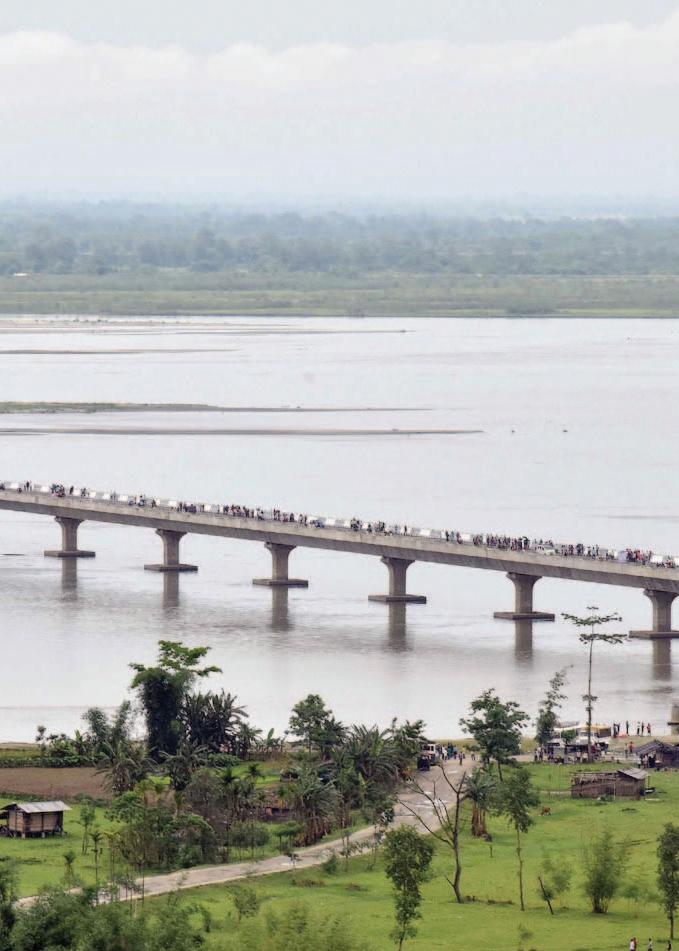
1 minute read
Increase India Knowledge
Increase Your Knowledge
Dhola–Sadiya Bridge
Advertisement
The Dhola–Sadiya Bridge, also referred to as the Bhupen Hazarika Setu, is a beam bridge in India, connecting the northeast states of Assam and Arunachal Pradesh. Spanning 5.69 miles in length, it is the longest bridge in India over water.
The bridge spans the Lohit River, a major tributary of the Brahmaputra River, from the village of Dhola (Tinsukia District) in the south to Sadiya to the north.
Dhola–Sadiya Bridge has been designed to handle the weight of tanks weighing 60 tons and can serve as a defense tactical asset for India. The bridge enhances Indian Army’s mobilization capabilities and movement of troops and heavy equipment in the forward areas bordering China.
The boatmen who used to deploy all their boats whenever an Army convoy arrived have lost a big share of their business. Around 150 boats used to ply between the two ends of the river and with opening of the bridge, their livelihood is heavily affected.
The bridge was approved for construction in 2009 with funding from the Government of India as part of the Arunachal Pradesh Package of Roads and Highways. Construction began in 2011 and was completed in 2017.
The bridge is named after Bhupen Hazarika an artist, singer, and filmmaker from Assam. Sadiya is his birthplace. It was once a thriving town until an earthquake struck on August 15, 1950 and the Brahmaputra River changed its course, engulfing half the town. Since then, the place has been struggling with transportation woes.
Since India’s North East is a high-seismic region, the bridge was built using state-of-the-art equipment, including imported hydraulic rigs, and provided seismic buffers in all its 182 piers.









